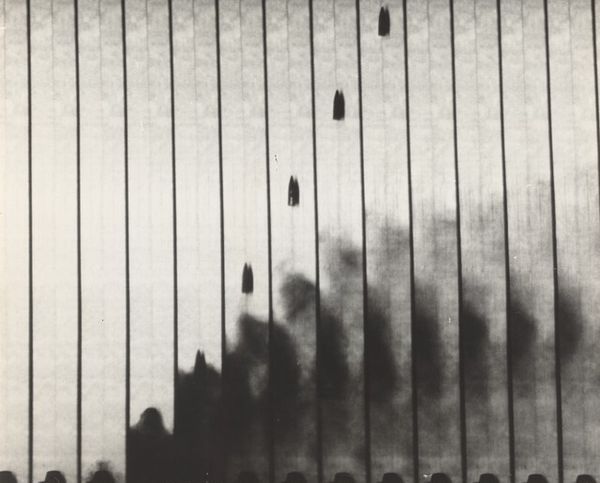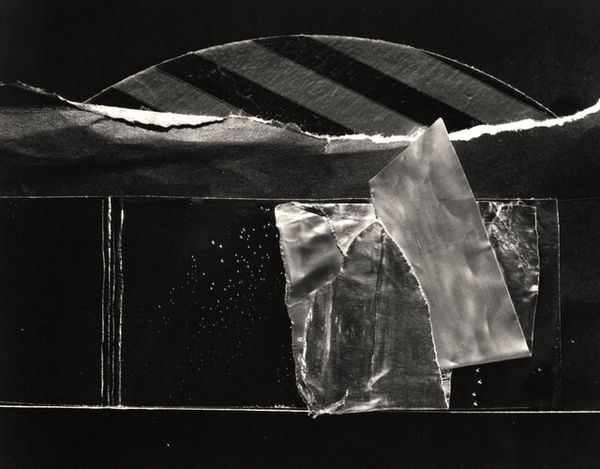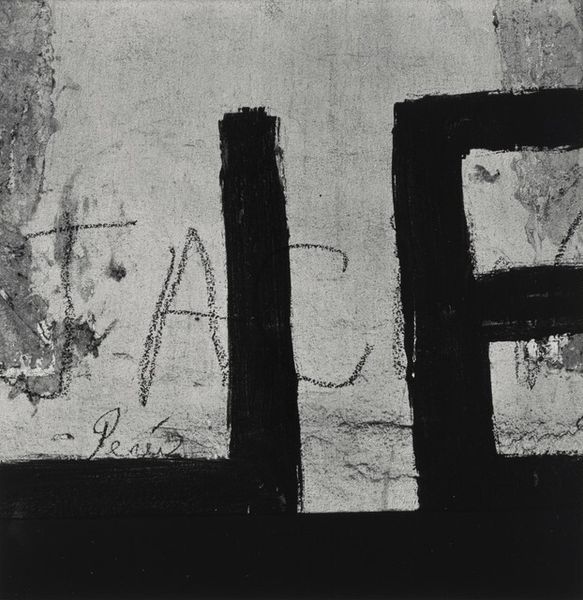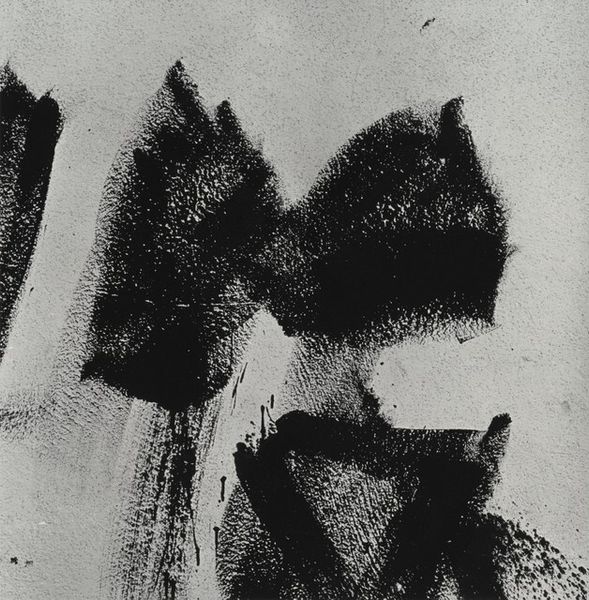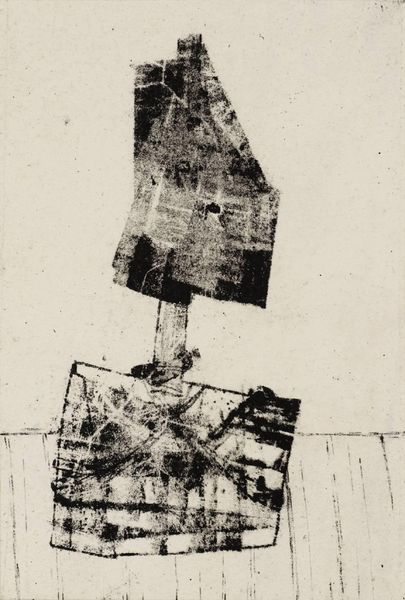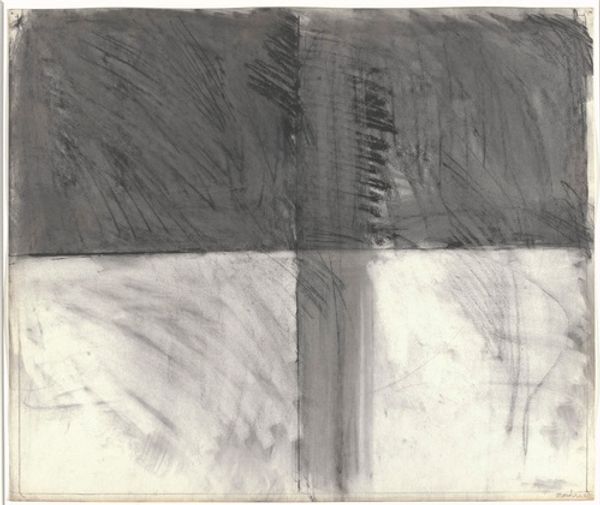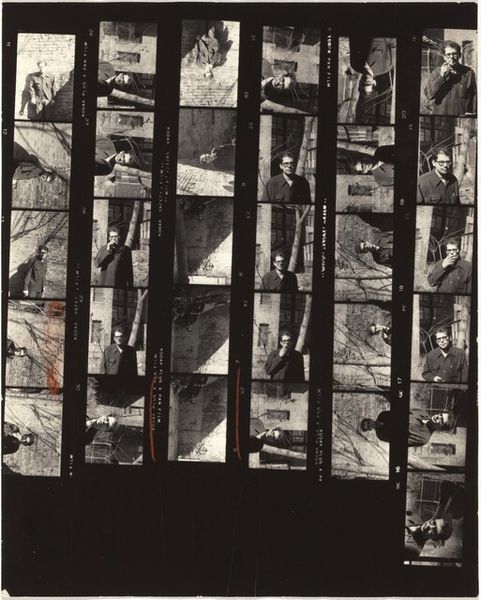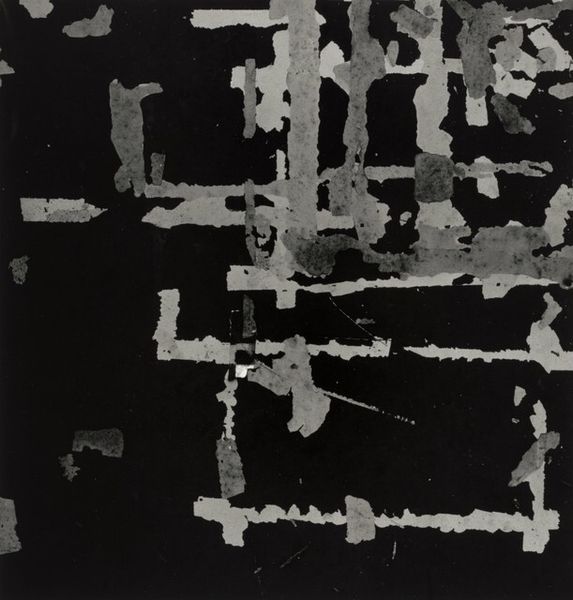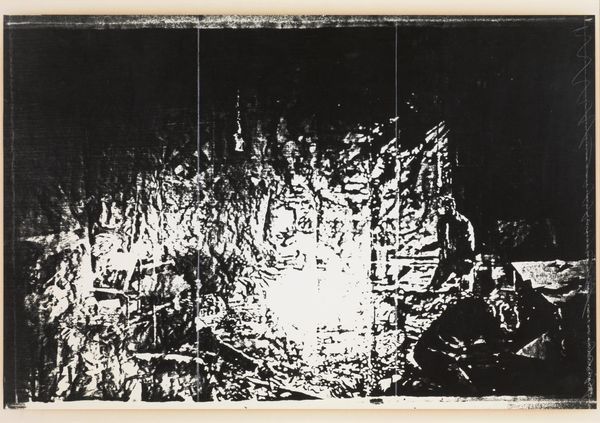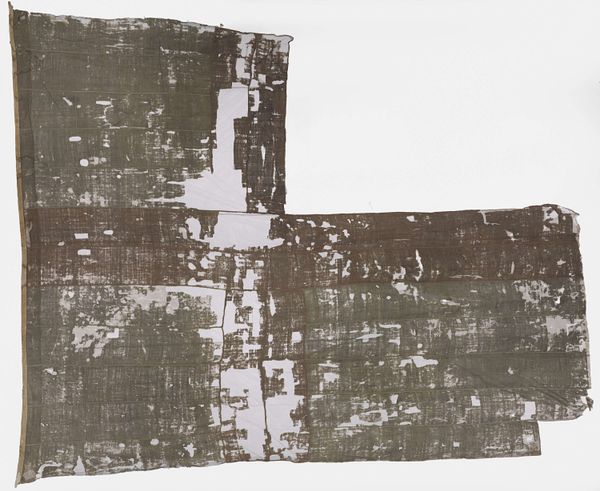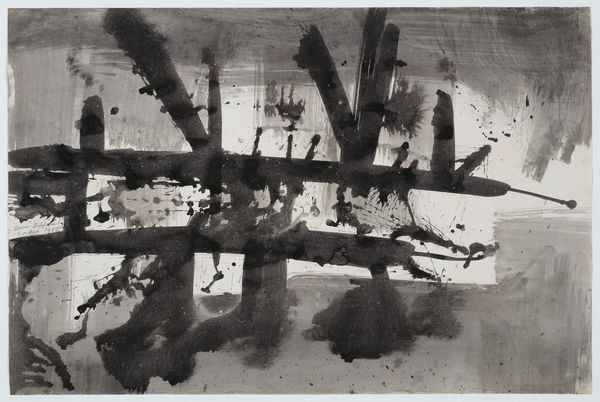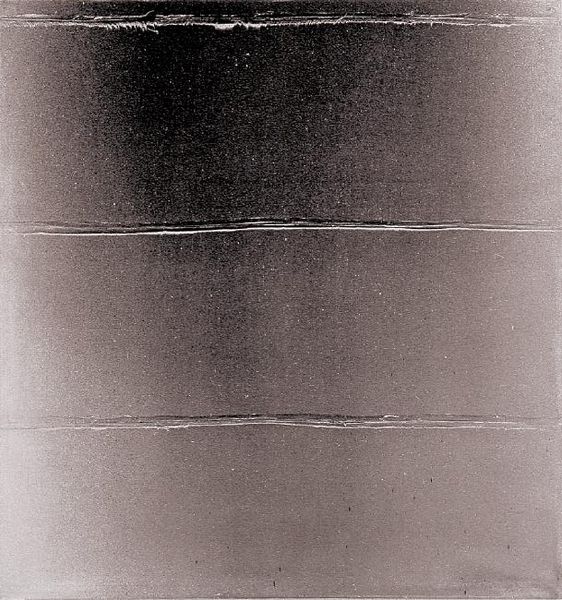
Dimensions: image: 33.02 × 34.93 cm (13 × 13 3/4 in.) sheet: 50.48 × 40.64 cm (19 7/8 × 16 in.)
Copyright: National Gallery of Art: CC0 1.0
Editor: Aaron Siskind's "Lima 306," a gelatin silver print from 1979, features these bold, abstract forms. I'm immediately struck by how graphic it is. The contrast is so stark and the composition feels very deliberate. What's your take on it? Curator: It’s compelling, isn’t it? What Siskind is doing here is deeply rooted in the post-war avant-garde. This image isn’t simply a photograph of a wall; it's an exploration of form, texture, and the politics of representation. We need to think about the 1970s—a period of intense social and political upheaval. How does this image speak to the dismantling of traditional structures and the rise of abstraction as a form of protest? Editor: Protest? I wouldn't have immediately thought of protest when looking at it. Curator: Think about abstract expressionism, its rejection of narrative, and embrace of subjective expression. Siskind is pushing that further, locating it in the urban environment. Those decaying walls aren't just backgrounds; they're testaments to social decay and resilience. Does the scale of that central shape—almost like a distorted "A"—make you consider absence and presence within marginalized communities? Editor: I see what you mean now. The rawness, the almost violent contrast... it feels very intentional. The suggestion of the letter A seems defiant rather than simple geometry. The urban setting tells the whole story. Curator: Precisely. It makes you consider where, when, and *for whom* art is made. I encourage you to keep digging deeper into that feeling as it connects you directly with artistic statements related to urban sociology. Editor: This makes me want to research the other artists who worked similarly at that time and place! It opens up a new lens for analyzing street photography, as resistance art. Curator: Exactly! Art history isn't just about dates and names, it’s about unpacking power, identity, and the narratives we choose to tell.
Comments
No comments
Be the first to comment and join the conversation on the ultimate creative platform.
